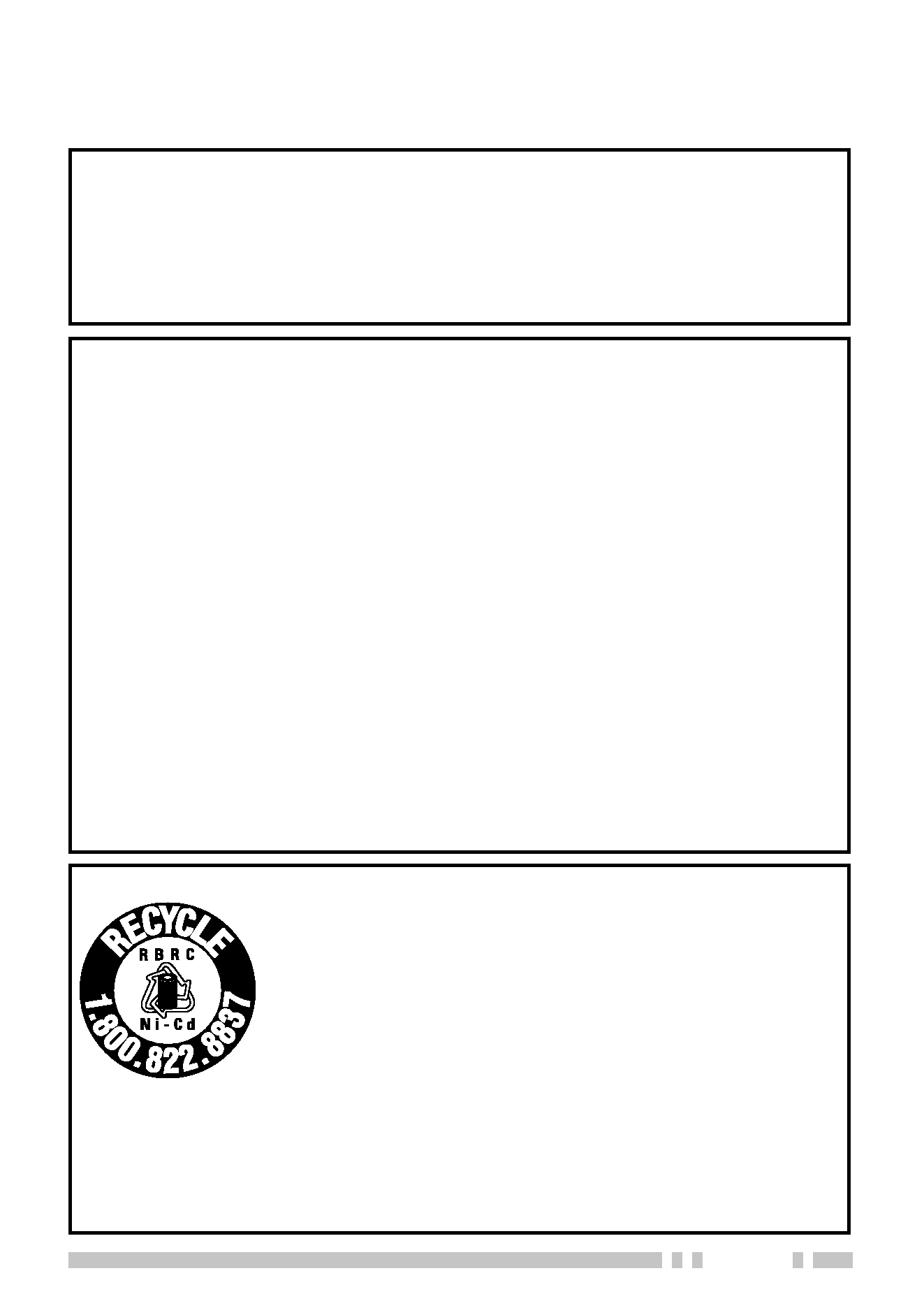
INSTRUCTION MANUAL
© B62-1716-
20 (K)
09 08 07 06 05 04 03 02
VHF FM TRANSCEIVER
TK-2160
UHF FM TRANSCEIVER
TK-3160

ii
PRECAUTIONS
Observe the following precautions to prevent fire,
personal injury, and transceiver damage.
·
Do not modify this transceiver for any reason.
·
If an abnormal odor or smoke is detected coming
from the transceiver, switch OFF the power
immediately and remove the optional battery pack
from the transceiver. Contact your KENWOOD
dealer.

i
One or more of the following statements may be
applicable:
FCC WARNING
This equipment generates or uses radio frequency energy. Changes
or modifications to this equipment may cause harmful interference
unless the modifications are expressly approved in the instruction
manual. The user could lose the authority to operate this equipment if
an unauthorized change or modification is made.
INFORMATION TO THE DIGITAL DEVICE USER REQUIRED BY
THE FCC
This equipment has been tested and found to comply with the limits for
a Class B digital device, pursuant to Part 15 of the FCC Rules. These
limits are designed to provide reasonable protection against harmful
interference in a residential installation.
This equipment generates, uses and can generate radio frequency
energy and, if not installed and used in accordance with the instructions,
may cause harmful interference to radio communications. However,
there is no guarantee that the interference will not occur in a particular
installation. If this equipment does cause harmful interference to radio
or television reception, which can be determined by turning the
equipment off and on, the user is encouraged to try to correct the
interference by one or more of the following measures:
·
Reorient or relocate the receiving antenna.
·
Increase the separation between the equipment and receiver.
·
Connect the equipment to an outlet on a circuit different from that
to which the receiver is connected.
·
Consult the dealer for technical assistance.
ATTENTION (U.S.A. Only):
The RBRC Recycle seal found on KENWOOD
nickel-cadmium (Ni-Cd) battery packs indicates
KENWOOD's voluntary participation in an industry
program to collect and recycle Ni-Cd batteries after
their operating life has expired. The RBRC program
is an alternative to disposing Ni-Cd batteries with
your regular refuse or in municipal waste streams,
which is illegal in some areas.
For information on Ni-Cd battery recycling in your area, call (toll free)
1-800-8-BATTERY (1-800-822-8837).
KENWOOD's involvement in this program is part of our commitment to
preserve our environment and conserve our natural resources.

ii
PRECAUTIONS
Observe the following precautions to prevent fire,
personal injury, and transceiver damage.
·
Do not modify this transceiver for any reason.
·
Do not expose the transceiver to long periods of
direct sunlight, nor place it close to heating
appliances.
·
Do not place the transceiver in excessively dusty,
humid, and/or wet areas, nor on unstable surfaces.
·
If an abnormal odor or smoke is detected coming
from the transceiver, switch OFF the power
immediately and remove the optional battery pack
from the transceiver. Contact your KENWOOD
dealer.

iii
CONTENTS
UNPACKING AND CHECKING EQUIPMENT ................... 1
SUPPLIED ACCESSORIES ......................................... 1
PREPARATION .................................................. 2
BATTERY PACK PRECAUTIONS .................................... 2
INSTALLING/ REMOVING THE (OPTIONAL) RECHARGEABLE
BATTERY PACK OR ALKALINE BATTERY CASE ...................... 7
INSTALLING/ REMOVING ALKALINE BATTERIES ...................... 8
INSTALLING THE (OPTIONAL) ANTENNA ............................ 9
INSTALLING THE BELT CLIP ....................................... 9
INSTALLING THE COVER OVER THE SPEAKER/ MICROPHONE JACKS .... 10
INSTALLING THE (OPTIONAL) SPEAKER/ MICROPHONE ............. 10
GETTING ACQUAINTED .......................................11
PROGRAMMABLE AUXILIARY FUNCTIONS .......................... 12
OPERATING BASICS ........................................... 13
SWITCHING POWER ON/ OFF .................................. 13
ADJUSTING THE VOLUME .......................................13
SELECTING A CHANNEL ......................................... 13
MAKING A CALL ............................................... 14
RECEIVING A CALL ............................................. 14
SCAN ........................................................... 15
PRIORITY SCAN ................................................ 15
TEMPORARY CHANNEL LOCKOUT ................................ 16
REVERT CHANNEL ..............................................16
2-TONE SIGNALLING ..........................................17
RECEIVING .................................................... 17
TRANSMITTING ................................................. 17
